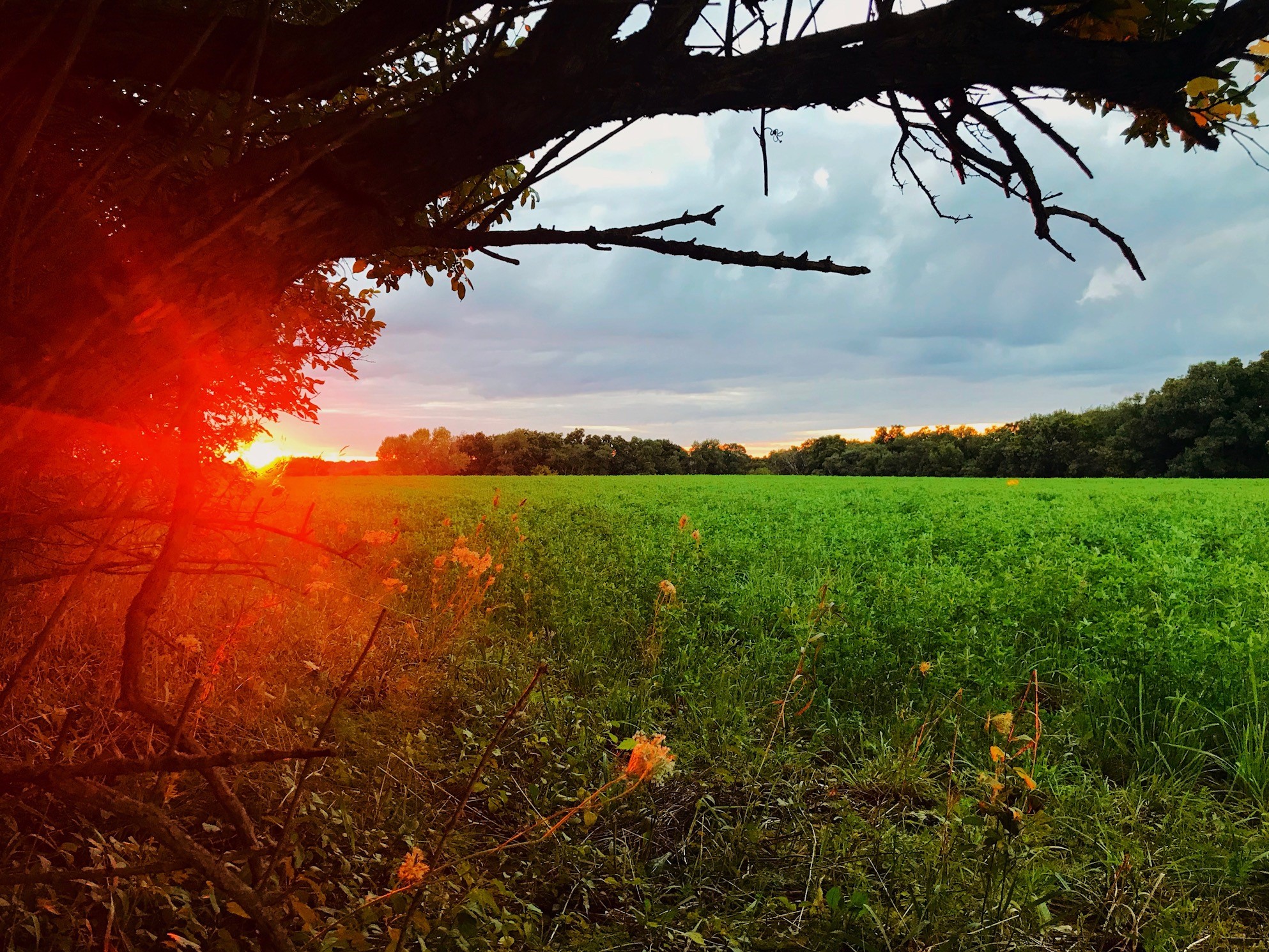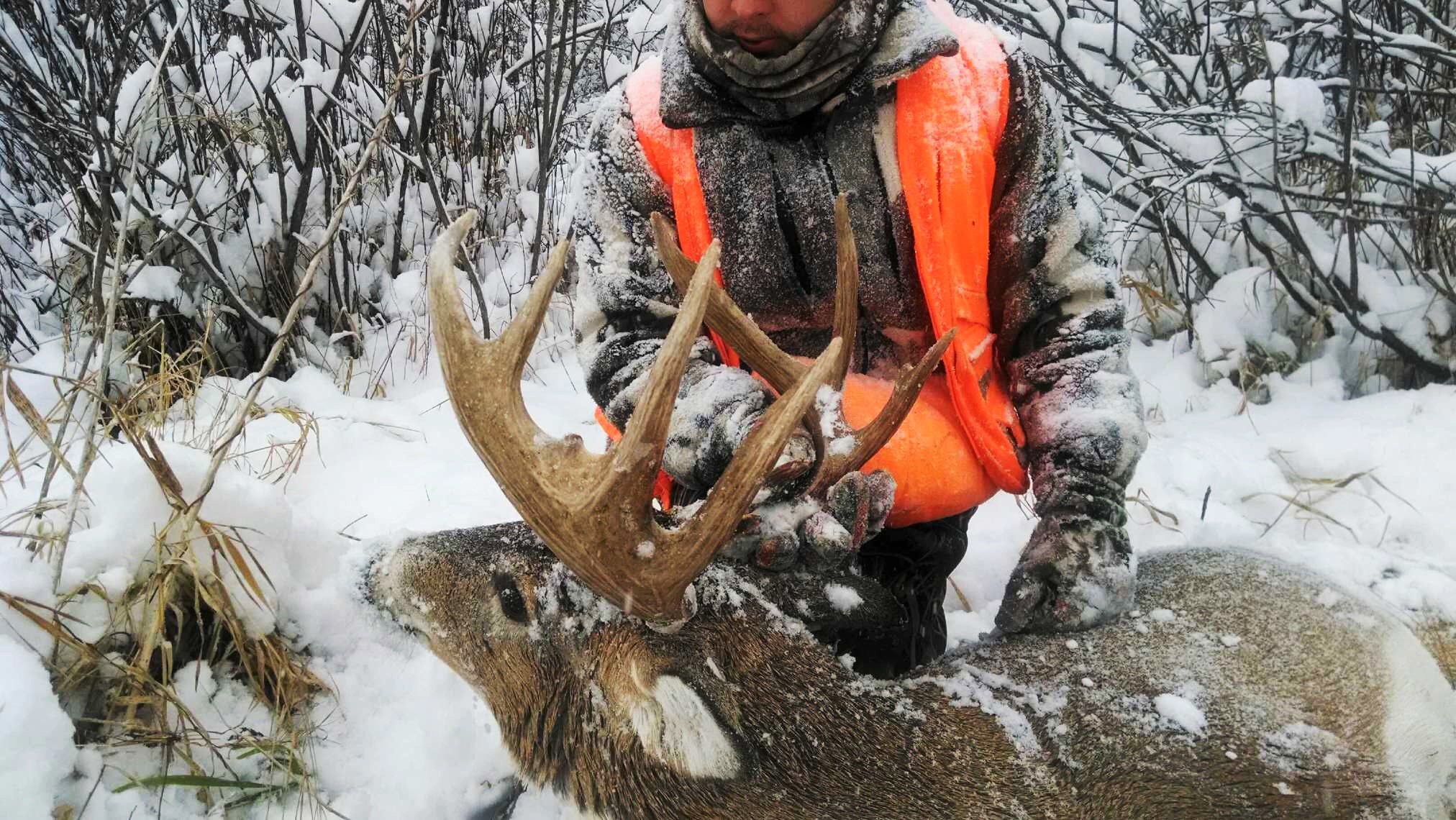Deer don’t have smartphones with weather apps to forecast what’s to come, but they sure do sense it, and their sensory organs seem to be a whole lot sharper than ours. When a low-pressure system is fast approaching, feeding during that calm before the storm becomes a priority for all wildlife, not just deer.
The final two hours leading up to a rainfall and immediately after it ends can showcase tremendous deer movement compared to unchanging dry conditions. Hunting in the rain has its drawbacks. With wetness comes comfortability, and even more concerning is the risk of blood trails washing away and the potential of losing game. While I admit the drawback of hunting before the rain is a nail-biter. Do I hunt or stay home? The risk is worth the reward, in my opinion. After all, I’m a hunter, I want to put myself in position to be successful during the most opportune times, and that window of time between a noticeable barometric pressure change and the actual precipitation can be lights out.
After the rain, deer almost immediately stand up and shake off, and one of the things on their mind is food. I will exit the comforts of my truck during a hard rainfall and march to my stand if I see the forecast calling for a short break in-between the rains. As wet and cold as it can prove to be, I have the utmost confidence that deer will be on their feet and moving during that break from the storm or after the tail end of it has pushed through.
Snowfall is a different ballgame, at least in the way of precipitation. In my experience, deer tend to move in their normal patterns during light to moderate snowfall, but heavy snowfall seems to be a different story. A caveat to my observations has proved that even heavy snowfall may not hinder whitetail movement as much during peak activity periods, such as during the rut or if the snow has been on-going and potentially worsening to icy conditions.
I hunted one of the most dizzying snowfalls of 2015 during the opener of the Wisconsin 9-day firearms season and ended up killing one of the best bucks of my hunting career. The rut was past the peak, but there was a hot doe on the farm and my cameraman and I observed the same buck I ended up shooting nudging that doe in the open corner of a cut bean field the night before. The following morning, my cameraman and I paddled down a small river to reach the backside of the piece I was hunting and came in from the downwind side. The wind was howling, and the snow was accumulating at a rapid pace, but that didn’t seem to hinder deer movement. In the first twenty minutes of season we had already observed three different bucks and five does. It was in that first hour I ended up shooting the buck we had observed the night before after a pair of does came walking through the marsh we were situated over.
Barometric pressure is one of the main conditions I keep track of to determine optimal days and times to be in the woods hunting whitetails. Although a cool overcast day with the light fragrance of a distant burning leaf pile has more of that “deery” feel to it, high pressure days with clear skies and cool temps following a cold front are my all-time favorite days to be in the treestand from sun-up to sun-down. With a heavy frost on the ground, chilly air, and a rising barometer, deer seem to be on their feet more so than any other condition I’ve observed in twenty-five years of hunting.
 The author waits with anticipation during an evening with high barometric presssure conditions.
The author waits with anticipation during an evening with high barometric presssure conditions.
Wind is another top factor to pay attention to in all cases when approaching a hunt. Aside from wind being the greatest scent-free program that lasts all day if you use it to your advantage, wind also has an effect on deer movement, and that includes their direction of travel.
A case of wind determining a whitetails direction of travel comes down to terrain features. To a deer, their sense of smell can arguably be considered their most vital sense keeping them alive. Whitetails like to approach areas they’re heading, such as a food source, or bedding, from downwind to make sure they have a clue of any danger before they reach their destination. As a hunter whose strategy is to hunt those core areas, we must be cognizant of how a whitetail is going to use their nose before approaching a target area. That means hunting downwind of the areas you’re expecting the deer to wind up.
Whitetails don’t always move with the wind in their face, sometimes they’ll travel hard transitions from thick cover and open terrain with a 45-degree crosswind. An example of this would be a transition of cattails to open terrain. A crosswind slashing across the cattails and blowing over the open terrain provides an excellent opportunity for a deer to walk that edge comfortably in that they can see across the open terrain and smell what they can’t see undercover in the cattails.
Thermals is the last concept I’ll touch on in this article as it is one more key fundamental a hunter must grasp to comprehend how whitetails navigate in uneven terrain, especially ridges, bluffs, and mountains. Thermals are easy to conceptualize – they’re either rising or falling. In the morning, air rises. It’s a form of atmospheric updraft and is a result of uneven ground temperatures from solar radiation. The best way to imagine a rising thermal updraft is understanding that as the sun of a new day begins to warm the ground it’s shining upon, the air directly above the ground begins to warm, as well.
How does this affect deer movement? That part is simple, if the air is rising than so is the scent caught in the airstream. In other words, if you’re hunting low and the deer are moving above you, they will surely smell you and be gone before you can react. A rule of thumb is this, hunt higher elevations in the morning and hunt lower in the evenings when the thermals settle back down. Deer innately travel where their sense of smell is most advantageous for their safety, so expect them to move higher in the mornings and lower in the evenings in hilly terrain.
By utilizing weather patterns, wind, and thermals to your advantage, you can guarantee yourself a better setup from the get-go. With the information provided by weather apps such as Wunderground, you should be able to effectively preplan your setups and know exactly where and when you need to be out hunting this fall.






